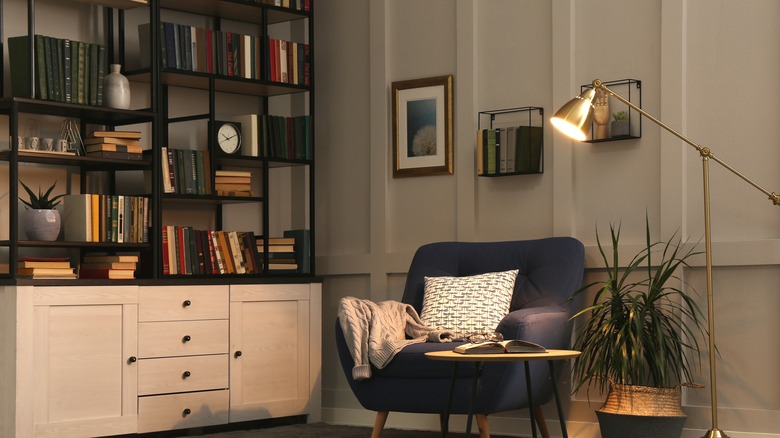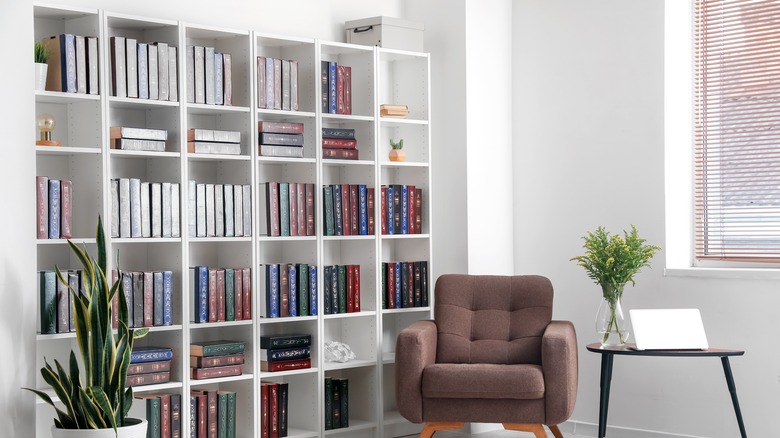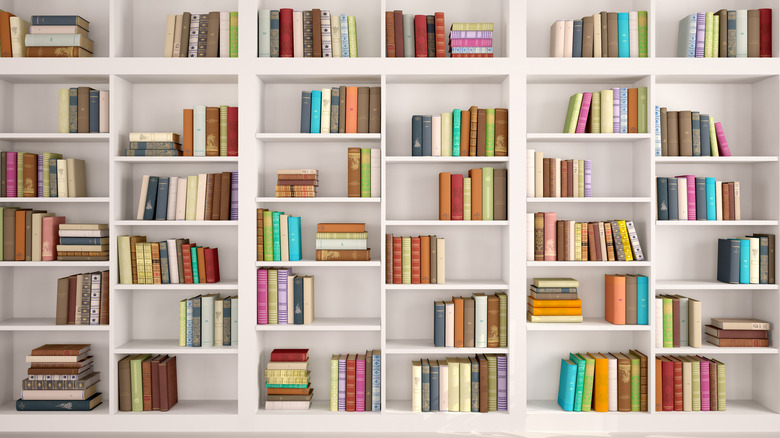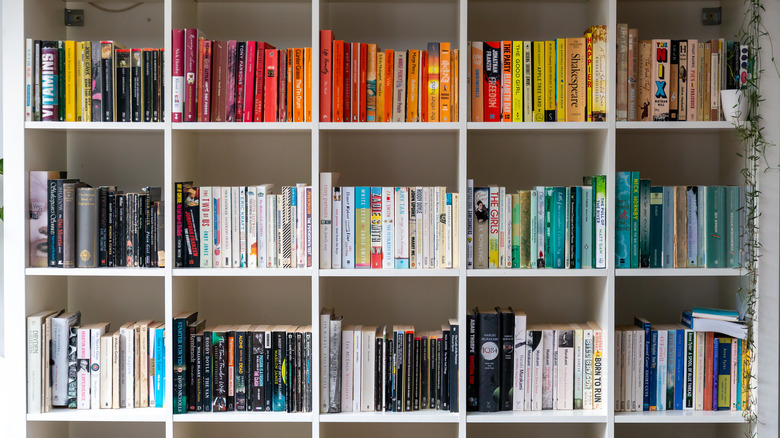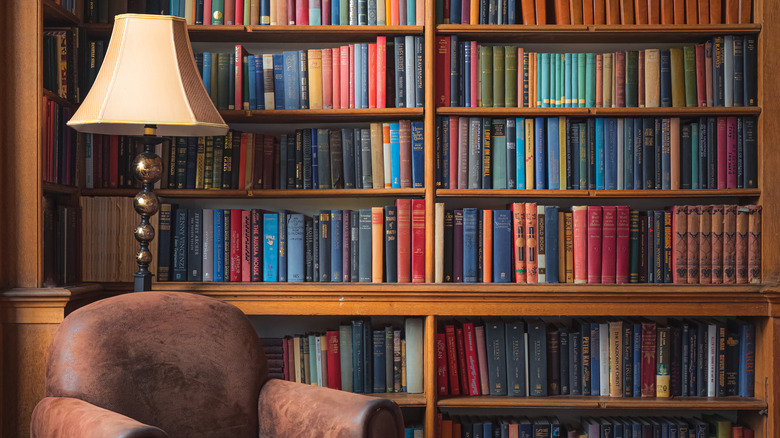A Design Expert Tells Us How To Create The Perfect Home Library
Home libraries are a great addition to virtually any living space. The World Economic Forum notes that the average American household has roughly 114 books, and reading from an early age will impart life skills and improve a child's cognitive, literary, and educational development. Taking these books and developing an inviting reading space and bookshelf can add to the ambiance of a home and make for more adept readers among those in the household.
In an exclusive interview with House Digest, Satsha Lopez-Jaimes, an interior designer with Freemodel offers her expertise on how to create a functional and stylish home library. "Usually, the purpose of a library is to provide knowledge and cultural heritage through a collection of books," she notes. "Your library will serve as the resource center in your home and is designed to support lifelong learning and personal growth." When planning where and how to set up a library in your home, she explains that it's best to "start by determining the purpose and style of your library. Consider the types of books you want to store, the amount of space you have available, and the aesthetic you want to create."
Consider what type of shelving you want
Form should follow function when designing a home library. Some homeowners will have a few books to showcase while others may have collected a vast array of titles. "There are several styles of library shelving, and each with its own unique look and function," says Lopez-Jaimes. She offers a few tips on the format for your library shelves, depending on the aesthetic you are seeking or require:
- Traditional bookcases are tall, wooden units with multiple fixed or adjustable shelves, often with decorative moldings and trim. They are ideal for storing books and other items in a classic and timeless manner.
- Modular shelving is made up of individual components that can be combined in various configurations to fit your specific needs and space. They are often made of metal or particleboard and are perfect for contemporary or modern design styles.
- Floating Shelves are mounted directly to the wall without any visible brackets, giving them a sleek and minimal look. They are perfect for small spaces or for displaying decorative items along with books.
- Rolling shelves are mounted on casters, making them easy to move and adjust as needed. They are perfect for flexible storage options in libraries, classrooms, or other multi-use spaces.
- Stackable shelves are a versatile option that maximize vertical space. They are often made of plastic or metal and are easy to clean and maintain.
Be smart with storage
The shelves themselves will support not only your books but also any other decorations you may want to show off. "Be mindful of how to play with the storage you have in your library and how to use it." Lopez-Jaimes advises. "Make sure your storage options are sturdy enough to hold your books and match the style you want for your library."
There are lots of different furniture options that can be used to create a library. Lopez-Jaimes notes, "Cabinets offer enclosed storage for items that you want to keep hidden or protected. Drawers are a great way to store items that you don't want on display, such as papers, files, or other small items. Wall-mounted shelves are a space-saving option. They are perfect for storing small items or items that you want to keep within easy reach." Incorporating decorations from recent travel destinations can be a big hit with those visiting your home and browsing through your library, while adding a few trinkets throughout will help to break up a solid wall of text that can become monotonous.
Organize your books and decorate accordingly
When it comes to placing your books on the shelves, there are also lots of different options. "You can arrange them alphabetically by author or genre, by color, or by size. Make sure to leave enough space between books to make it easy to find what you're looking for," Lopez-Jaimes says.
Organizing your titles should be all about how you intend to use your book collection. Public and institutional libraries follow strict cataloging rules to make the collection easily accessible to everyone. however, you only need to make your library accessible for yourself. "Bigger books like encyclopedias and anthologies can be organized by volume, and traditional books can be stored by volume, subject, author, and/or date," she suggests.
Completing the perfect library involves more than the shelves and books themselves, though. Lopez-Jaimes notes that when designing a home library, you should "decorate the space to make it feel cozy and inviting." It's a good idea to "add a comfortable reading chair, some throw pillows, and a rug to create a warm and welcoming atmosphere. Consider incorporating personal touches like artwork, photos, or a collection of objects that are meaningful to you," she says.
Light your library well
A library can't be used to its fullest if it doesn't include the fundamentals of a welcoming reading environment. "Good lighting is important for reading, so consider adding lamps, overhead lighting, or even a skylight to brighten up your space," Lopez-Jaimes recommends. "Table lamps are a good option for libraries that have reading tables or comfortable chairs, as they provide a more personal and adjustable source of light," she adds.
There are many great lighting options that homeowners can choose from. The lighting doesn't have to include small table lamps or a full renovation of the ceiling. "Floor lamps are a great option for libraries that don't have a lot of table space, as they can be placed next to a reading chair or sofa. They come in a variety of styles and can be adjusted to provide the right amount of light for your needs. Wall sconces are a stylish option, providing ambient lighting while also serving as a decorative element," she explains.
